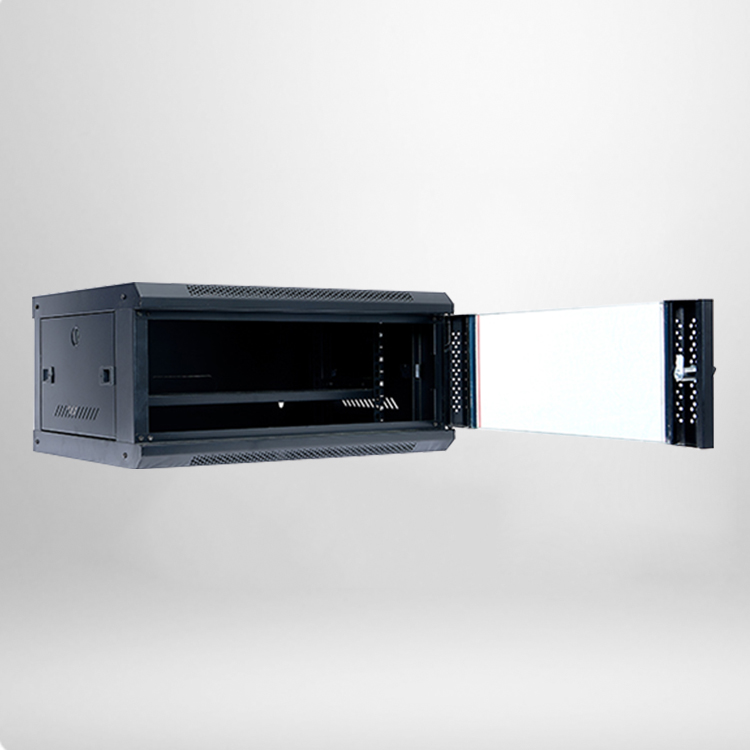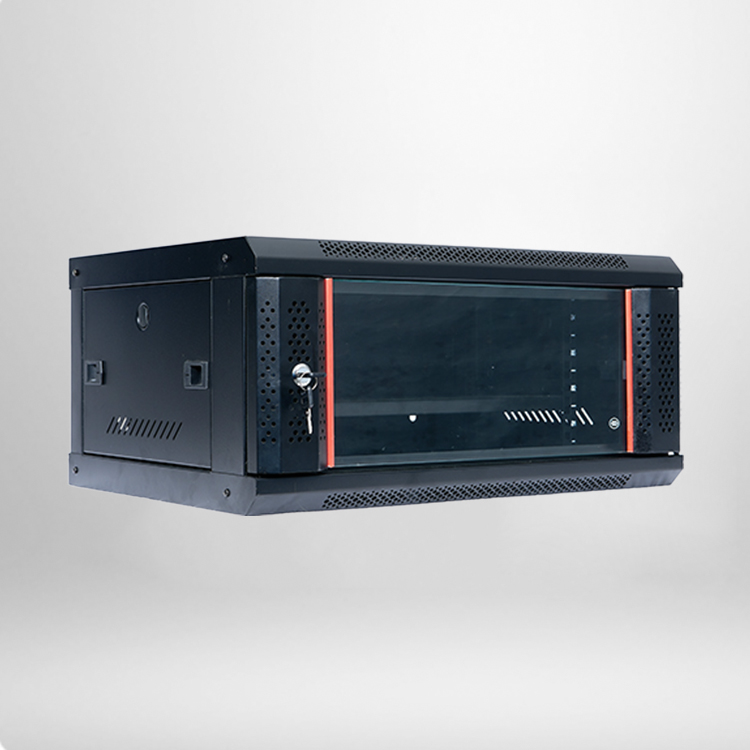
A 4U Network Rack is a standardized equipment enclosure designed to organize and protect network devices, with the “4U” referring to its height—each “U” (unit) equals 1.75 inches, making this rack 7 inches tall. Unlike larger 12U or 24U racks used in data centers, the 4U model targets small-scale environments where space is limited but organization and protection remain critical. It balances compactness with functionality, making it a go-to choice for home labs, small offices, and retail stores.
One of the key strengths of a 4U Network Rack is its space efficiency. In small offices or home setups, floor or wall space is often at a premium—bulky racks can crowd the area and disrupt workflow. The 4U rack’s compact height fits neatly in closets, under desks, or on utility shelves, while still offering enough vertical space to house essential devices. Typical setups include a network switch, a router, a small server, and a patch panel—all of which can be mounted within the 4U frame without wasting space. This organization eliminates messy piles of equipment and tangled cables, making it easier to troubleshoot or upgrade devices later.
Protection is another core benefit. 4U Network Racks are usually made from durable steel or heavy-duty aluminum, shielding internal devices from dust, accidental knocks, and even minor temperature fluctuations. Many models include closed sides or doors (glass or solid) that add an extra layer of security—preventing unauthorized access to sensitive network equipment, which is crucial for small businesses handling customer data. The enclosed design also helps with cable management: most racks have built-in cable ports or tie-down points to route cords neatly, reducing the risk of accidental disconnections or overheating caused by blocked vents.
Versatility in mounting and compatibility is also a highlight. These racks follow industry-standard 19-inch width guidelines, meaning they work with most off-the-shelf network devices—from routers and switches to UPS (uninterruptible power supply) units. Adjustable mounting rails let users position devices at different heights, accommodating varying equipment sizes and leaving room for future additions (like a small NAS, or network-attached storage, device). Some 4U racks are also wall-mountable, which saves floor space entirely—ideal for tiny offices or home labs where every square foot matters.
When choosing a 4U Network Rack, there are a few key considerations. First, check weight capacity: ensure the rack can support the total weight of your devices (including future additions) to avoid bending or damage. Second, consider ventilation—look for racks with mesh doors or vented sides to prevent overheating, especially if you’re housing heat-generating equipment like small servers. Third, think about accessibility: glass doors let you monitor LED indicators without opening the rack, while removable side panels make it easier to install or adjust cables. Finally, verify compatibility with your devices’ depth—some racks are shallower, so measure your longest device (like a UPS) to ensure it fits.

Maintenance is straightforward. Regularly dust the rack’s interior and exterior to prevent buildup that can block vents. Check cable connections periodically to ensure they’re secure, and tighten any loose mounting screws to keep devices stable. If the rack has doors or locks, test them occasionally to ensure they function properly, especially if security is a priority.
In conclusion, the 4U Network Rack is a practical, space-saving solution for small-scale network setups. Its compact size, durable design, and compatibility with standard devices make it ideal for home labs, small offices, and retail spaces. By prioritizing weight capacity, ventilation, and accessibility when choosing a rack, you can keep your network organized, protected, and ready to grow—without sacrificing valuable space.


